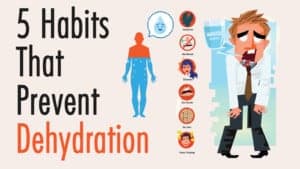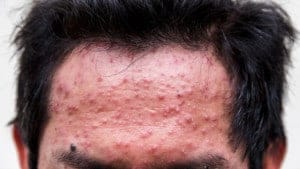The vagus nerve (pronounced just like “Vegas”) is the tenth of twelve cranial nerves located in the rear of the skull.
Despite the name, the vagus nerve is a pair of nerves, one on each side of the medulla oblongata, a stem-like structure that makes up part of the brainstem. Relatedly, the vagus nerve connects the nerves of the brain stem to the body.
The word ‘vagus’ stems from the Latin word for wandering, a testament to the nerve’s uniqueness as the most extensive and most wide-ranging cranial nerve. The vagus nerve originates in the brain stem and extends to multiple organs, including the heart, lungs, spleen, liver, stomach, and kidneys.
In this article, we will discuss the health implications of the vagus nerve. Also, we will share how you can promote its health.
Let’s begin by talking about the vagus and its functions.
What does the vagus nerve do?
The primary functions of the vagus nerve break into four categories, including:
[1] Parasympathetic: Responsible for the digestive tract operation, heart rate, and respiration.
[2] Special sensory: Provides the sensations of taste from behind the back of the tongue.
[3] Sensory: Operating specific mechanisms of the abdomen, heart, lung, and throat.
[4] Motor: Enabling the movement of neck muscles, enabling speech and swallowing.
The nerve is most well-known for controlling the body’s parasympathetic nervous system, or PNS. The PNS is often referred to as the body’s “rest and digest” system, which works to balance the “fight or flight” response of the sympathetic nervous system or SNS.
The SNS works to increase alertness, blood pressure, breathing rate, energy, and heart rate. The PNS reduces all of these and assists the body with calmness, digestion, and relaxation. Furthermore, the vagus nerve aids in bodily processes such as defecation, urination, and sexual arousal.
The dispersed, intricate network of nerves originating from the vagus has other effects on the body, including:
– The sending of information from the gut to the brain
– Reducing inflammation by sending anti-inflammatory signals to other areas of the body.
– Assisting with relaxation via deep breathing.
– Allowing for mental and physical recovery following events that induce anxiety, fear, and stress.
Vagus nerve activity links to multiple medical conditions, including arthritis, depression, epilepsy, inflammatory bowel disease (IBD), migraine headaches, and several more common illnesses.
In actuality, precisely what the vagus nerve does – and the scope of is effects – remains somewhat of a mystery. Like most other components of the complex nervous system, scientists and other experts continue to make discoveries about it.
How is the vagus nerve key to health?
“…every year somebody finds a new organ or system that [the vagus nerve] talks with. There’s a massive bioelectrical and biochemical series of events that the vague nerve is responsible for, and all that is impossible to map.” ~ Tiffany Field, Ph.D. (Source)
All of this begs the question: how does just one nerve system impact so much?
While scientists can not account for the more intricate goings-on of the nerve, it is evident that the vagus nerve is the central apparatus of the body’s relaxation response. This finding has enormous health implications, especially given the nature of stress exposure in modern times.
But it goes even deeper than that.
The vagus nerve’s encompassing structure in the brain and body is leading to research as a ‘neuromodulator’ for many conditions. Neuromodulation is the process whereby a particular neuronal body manipulates the chemical composition of surrounding neurons.
Currently, a medical treatment known as vagus nerve stimulation (or ‘VNS’) serves as a supplementary therapy for treatment-resistant cases of depression. Doctors also utilize VNS in cases of treatment-resistant epilepsy.
Per a review article published in the journal Psychiatry, the vagus nerve is “an attractive target” in the treatment for many psychiatric and gastrointestinal disorders. Moreover, researchers in the study point to recently-discovered nuclei of vagus cells that provide “critical controls” for heart, lung, and other internal processes.
The conditions cited for potential vagus-targeted treatment include post-traumatic stress disorder (PTSD) and inflammatory bowel disease (IBD). A component of the immune system response, vagal nerve treatments could benefit inflammation-related disorders.
The brain-gut axis
“The gut-brain axis (GBA) consists of bidirectional communication between the central and enteric [intestinal] nervous system, linking emotional and cognitive centers of the brain with peripheral intestinal functions … by means of neural, endocrine, immune, and humoral links.” [Emphasis added] ~ Carabotta, M., et al. (Source)
In recent years, medical science has definitively established the relationship between the gut and the brain. The gut-brain axis, a bidirectional communication pathway between the central nervous system and intestines, is closely linked to neural, endocrine, immune, and metabolic functions. Research has found that an estimated that 80 to 90 percent of the vagus nerve’s neurons transmit sensory information from the stomach and intestines to the brain.
The most recent studies implicate the vagus nerve in regulating inflammation, mood, and pain, which can potentially modified by VNS.
Maintaining vagus nerve health
Putting this all together, it is clear that the vagus nerve has considerable influence on multiple areas of the body, and on overall health and wellbeing as a whole. Indeed, perhaps no other structure influences mental and physical health to such a high degree.
The question thus begged is: how can we promote the health of the vagus nerve? Fortunately, science has shed some light on this as well.
1 – Breathe!
The most natural way to promote the health of the vagus nerve is controlled breathing. Studies have shown guided breathing exercises to strengthen vagal tone; this has the secondary effect of managing conditions such as prehypertension.
Of course, given its inextricable link with the vagus nerve, it is vital to care for your gut. We can do so by managing our microbiome (“good bacteria”) by consuming probiotics. Certain strains of probiotics reduce feelings of anxiety and depression. Fermented milk products such as yogurt have proven to be especially useful.
2 – Visualize
Practicing visualization has also been shown to improve vagal tone. Visualization works by suppressing the body’s fight or flight response, which helps the mind feel safe, thereby limiting vagus nerve activation.
Perhaps the best way to strengthen the vagus nerve is to rewire your brain via activity. How to do this?
The first thing to remember is that the mind tends to dwell on the negative when idle. In a groundbreaking study published by two Harvard researchers, it was discovered that during periods when we’re not focused on the present moment (i.e., the task at hand), we tend to produce negative thoughts and emotions.
3 – Be mindful
It is essential, therefore, to practice techniques such as mindfulness.
Despite all of the hullabaloo around the topic, mindfulness is nothing more than remaining in the present moment with your attention. Of course, this is not easy, given the mind’s tendency to rehash the past and imagine the future.
This understanding is where mindfulness meditation can make all of the difference.
The idea here is to retrain your attention and strengthen your concentration power. The brain’s default mode network (a real thing, by the way) is most active when we’re not doing anything, so many of us find it hard to stick with meditation in the beginning.
The mind won’t shut up. That’s okay. Let it jabber.
This mental noise is a byproduct of an untrained mind. Indeed, this constant mental noise makes meditation so tricky at first. Everyone experiences this, and you will too.
However, individuals who stick with it quickly become hooked. Or, instead, it’s their mind that becomes addicted to quiescence that can only be found in meditation.
But you don’t even need to meditate if you don’t want to. There are other ways, although the best, most long-lasting results do come from prolonged mental training.
 4 – Other easy ways to promote vagus nerve health
4 – Other easy ways to promote vagus nerve health
Listen to your favorite music while paying close attention to the lyrics and instrumentals.
Practice a simple breathing exercise. Breath in slowly to the count of four and release to the count of seven. Do this for five minutes.
Do some gentle stretching, even if it’s for just a couple minutes.
Watch something funny. Laughter activates the vagus nerve.
Hug your kid or dog. Affection promises to strengthen the vagal tone.
Go out for a brisk walk — exercise produces positive effects in the vagus.
Finally, watch your nutrition and stress levels. Eat a more balanced diet and eliminate those unnecessary burdens that only serve to stress you out.











